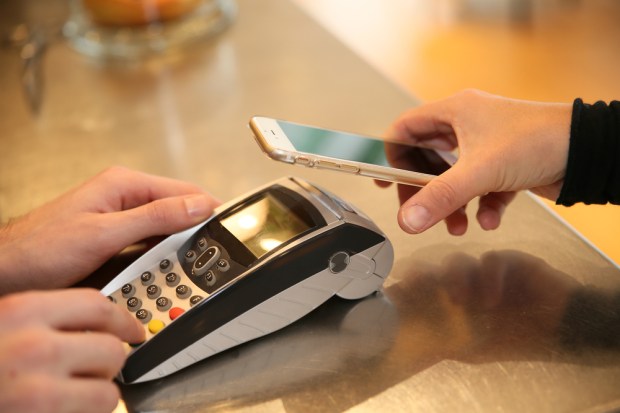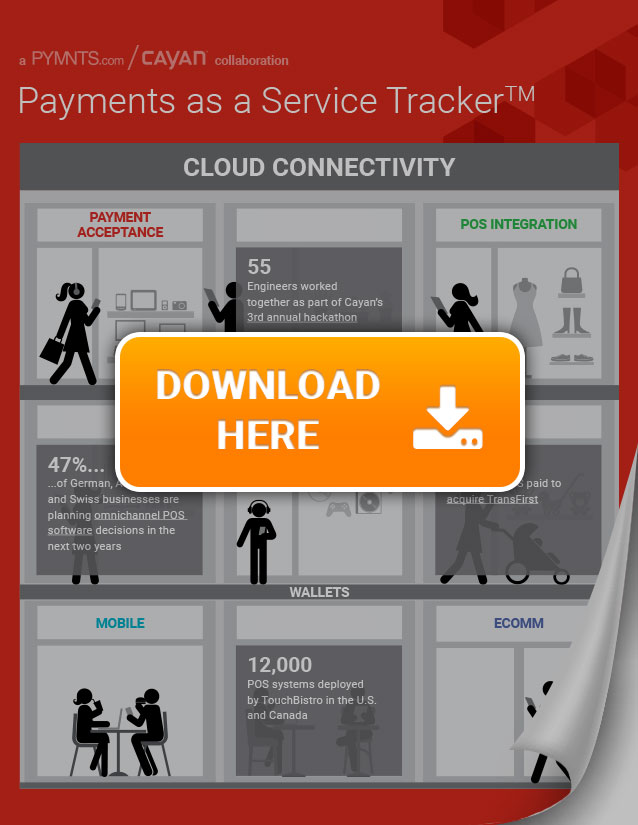Quick-Adopting QSRs Lead Full-Service Payments Charge; Where to Next?

With some help from quick-service restaurants, full-service payments have transformed from a novel curiosity to an increasingly essential part of many retail businesses. In this month’s Payments as a Service Tracker™, PYMNTS spoke with Alex Barrotti, CEO and Founder of TouchBistro, about the rise of service-inclusive payments and what the future holds for this evolving industry. The tracker also includes the latest news from leading players in the space and a directory with profiles on 28 global Payments as a Service providers, including 10 new entries.
A few years ago, paying for food, goods or services at a store or restaurant was the same no matter where you went. Whether paying with a card or by cash, the transaction needed to be conducted at a traditional stationary register or terminal, limiting where and when customers could make their purchases. Now, it’s a whole new ball game. More and more, merchants are offering new and innovative full-service payment options, and can conduct transactions from anywhere in their store or restaurant.
Alex Barrotti, CEO and Founder of TouchBistro, an iPad-based point of sale solution specifically designed for restaurants, has seen this shift first hand. In an interview with PYMNTS, Barrotti credited quick-service restaurants, also known as QSRs, who were open to advancements in technology and quick to adopt new PaaS tools, with helping to push the industry forward.
“Five years ago, when we started this company, if someone said, ‘oh I’m using an iPad as my register,’ it was seen as a bit of a gimmick,” Barrotti said. But times have changed, and the company has since deployed more than 12,000 POS systems in restaurants throughout the U.S. and Canada.
What made these merchants so willing to keep an open mind toward evolving technology? Barrotti said that because QSRs are often small, independent locations, they are able to be fast and decisive.
“They’re very fast movers and early adopters,” Barrotti said. “They can make decisions quickly and are cool at adopting new technology. It’s an exciting space, they don’t have very long sales cycles, they can evaluate the latest technology and make a decision fast.”
There was also the savings factor. Because platforms like TouchBistro utilize consumer electronics, the companies can adopt those POS systems much more cheaply than systems with thousands of dollars’ worth of components.
“If you have no system, and compare a $300 iPad to a $3,000 terminal, that’s an easy decision,” Barrotti said.
Those quick decisions to embrace new technology have paid off. Barrotti cited Steam Whistle Brewing, one of Canada’s largest independent breweries. The company installed the company’s iPad platform and used one of their three iPads as a mobile ordering terminal when crowds packed their bar. Steam Whistle, Barrotti said, sold 9,000 additional liters of beer over a six-month period thanks to the mobile-ordering system.
That mobility offers lots of perks, Barrotti said. Businesses like restaurants use the mobile devices to speed up the ordering process for large parties, or even help cut down on how long their customers are waiting to be served.
“We had a coffee house that used it for line busting,” Barrotti recalled. “They had a line 20 minutes out the door, and the owner literally picked up the single iPad and just walked down the line and took orders while people waited for their coffees to be made. That really took off when the iPad mini came into existence.”
The technology has become almost essential in Toronto, the company’s hometown. Barrotti said that roughly half of the new restaurants opening in the city are using TouchBistro to accept and process payments.
“The appetite and the speed with which people are either switching or adopting has become really amazing,” he said. While in the past it was just a curiosity, he said, “there are streets where we have 50 different restaurants.”
That success is attracting interest from multiple industries. Now, full service payments were no longer seen as another modern fad or passing trend.
“It’s gone from a curiosity to a full-fledged movement,” Barrotti said, noting that similar tablet-based solutions are popping up in numerous different industries. “Look at the airport; there are kiosks absolutely everywhere that are just iPads that can accept payments. Even Apple is realizing that POS movement has become a major source for their sales of the iPad.”
And it seems to just be getting started. Barrotti said that since October’s EMV shift in the U.S., 60 to 70 percent of the company’s customers come from the U.S., up from just 40 percent prior to the shift.
So, what should full service payment industry observers look for from QSRs in the coming months? What trends will the early adopters take up, advancing the industry even further?
Barrotti said to look toward loyalty programs. Many QSRs still do not have a loyalty or rewards program, he said, and are looking to find an easy way to start one.
“What we’re getting a lot of demand for is just a straight loyalty app, one where people would not have to carry cards around,” he noted. “They’re just looking for a digital replacement to the stamp card you get at a coffee shop or a bubble tea shop, where you can get your tenth one free. A lot of people have been asking us for a straight loyalty check in so I can say, OK, I’ve been here 10 times, I’d like my free coffee.”
Barrotti also said he believes a day will come soon where paying for a purchase is as simple as answering your phone.
“I keep saying this, but I would love for them to do away with the third-party device,” he said, picturing a day when items like credit cards are a thing of the past. “I think the holy grail is when I can tap my phone to an iPad and initiate payment.”
Those days may not be far off.
“I think we’re halfway there,” Barrotti said. “You can tap your phone to the terminal and, in fact, some of the iPads even ship with an NFC antenna, but they are in transmit instead of receive mode. When I can tap my phone and make payment, without having to have the third-party device in the middle, I think that is going to be fantastic.”
To download the April edition of the Payments as a Service Tracker™ click the button below.
The PYMNTS.com Payments as a Service Tracker™, in collaboration with Cayan, is designed to give an overview of the trends and activities of merchant platforms that not only enable payment processing of new and old technologies, but also integrate with other features to improve the merchant’s experience, including customer engagement, security, omnichannel retail experience, analytics, inventory management, software and hardware management, and more.

